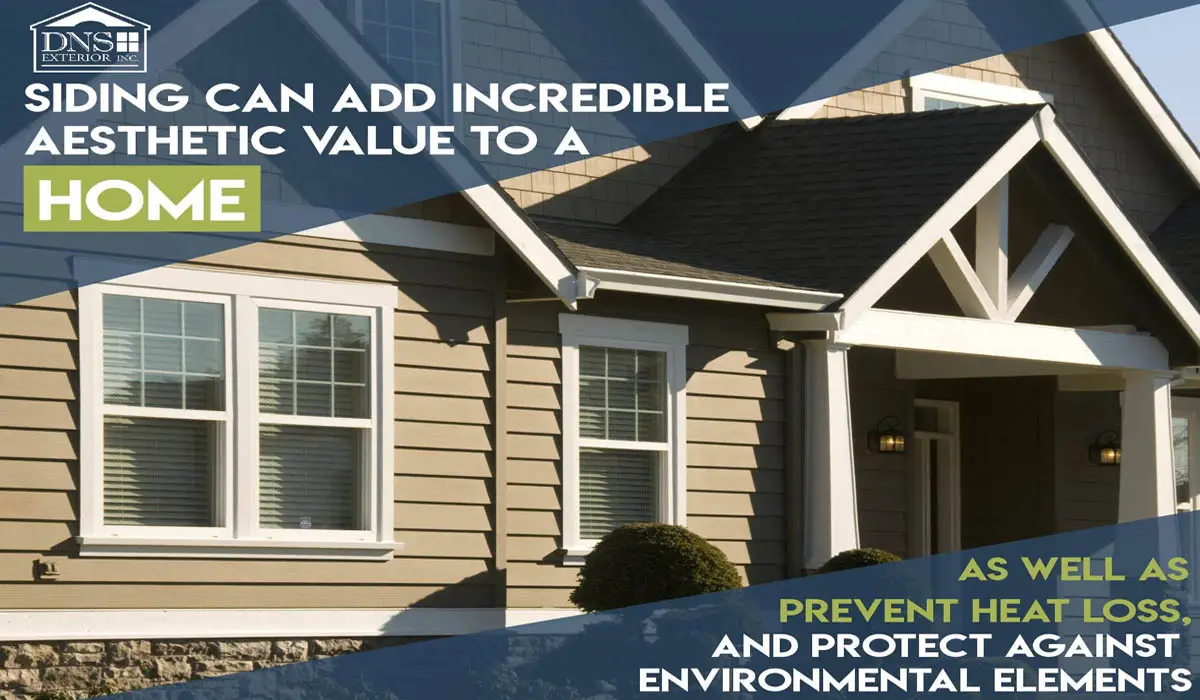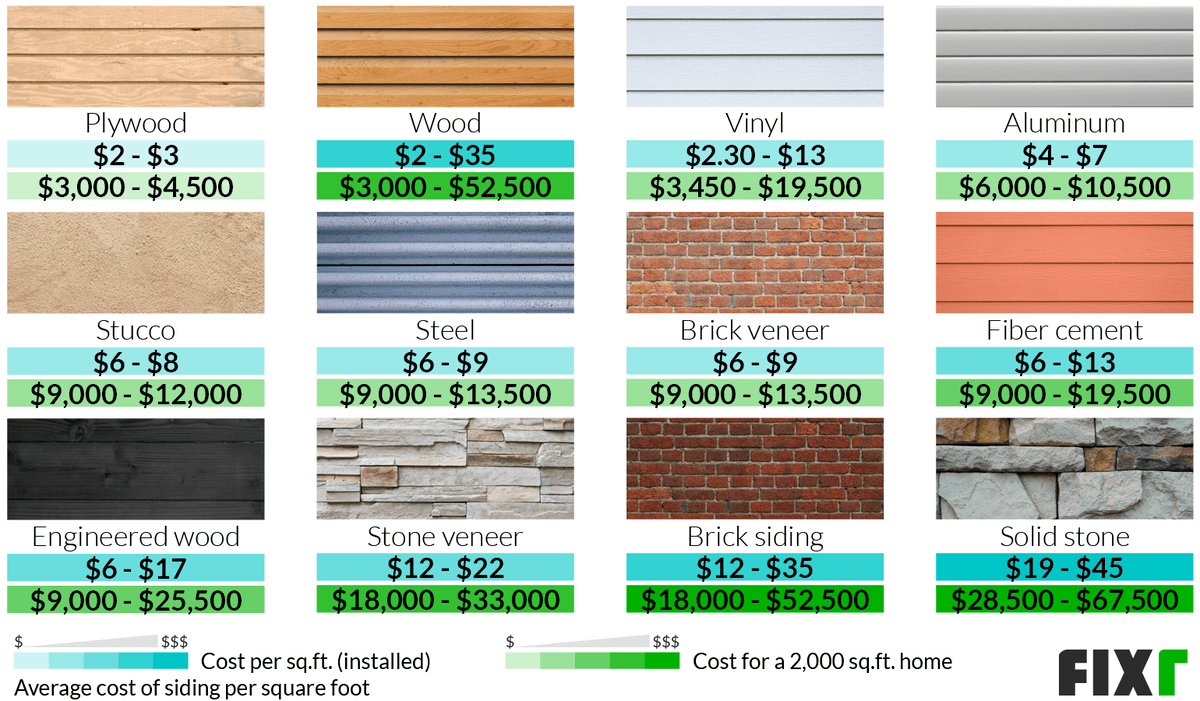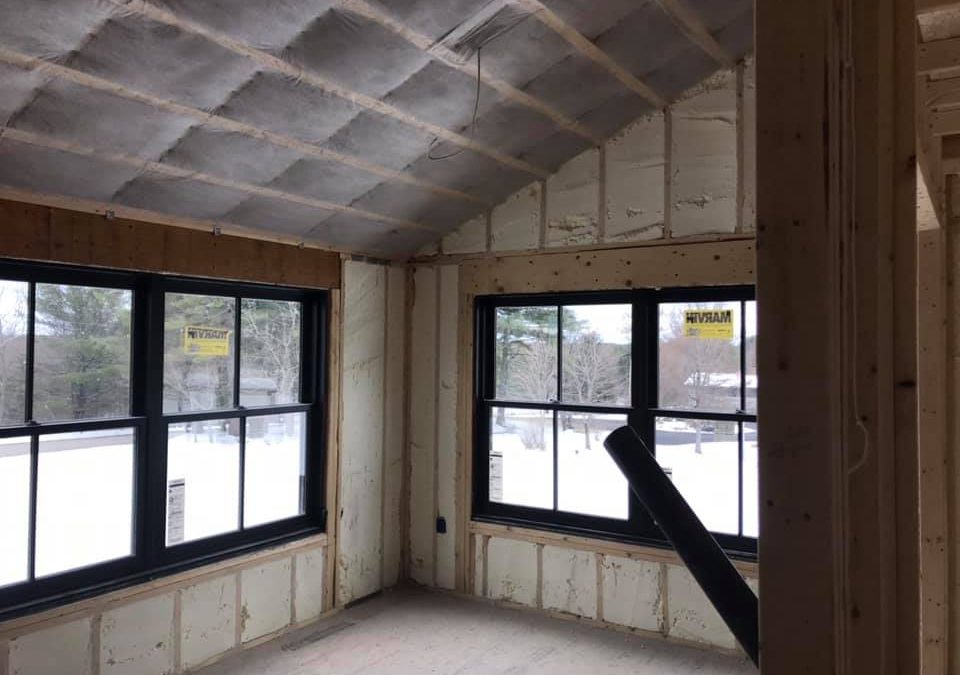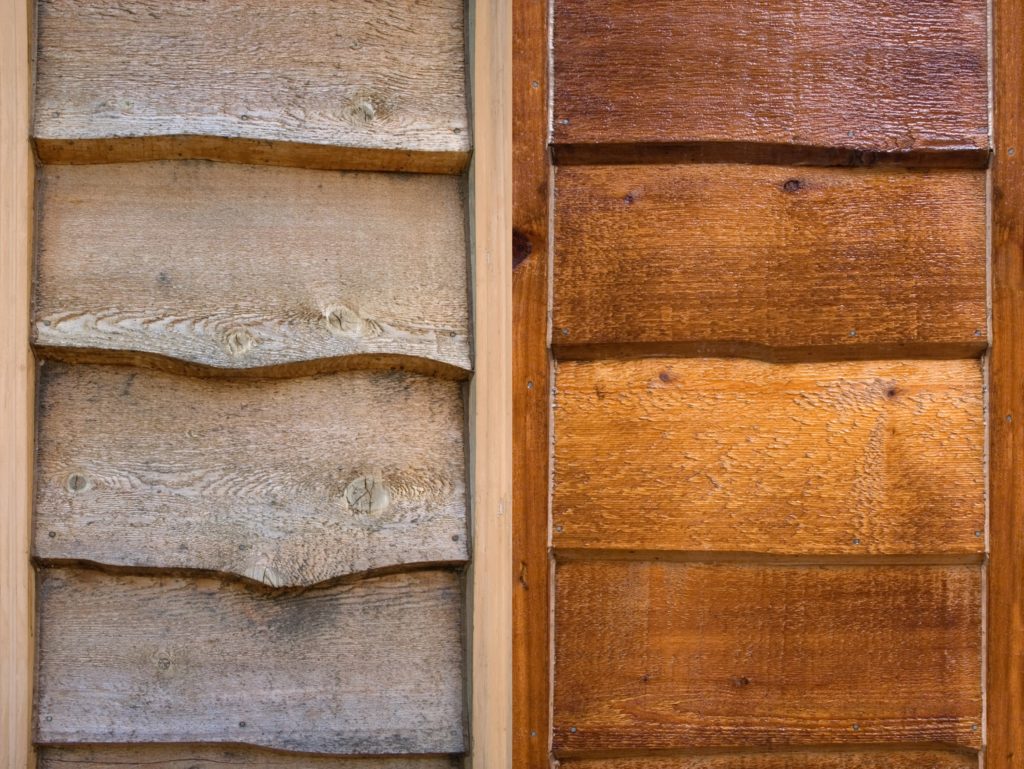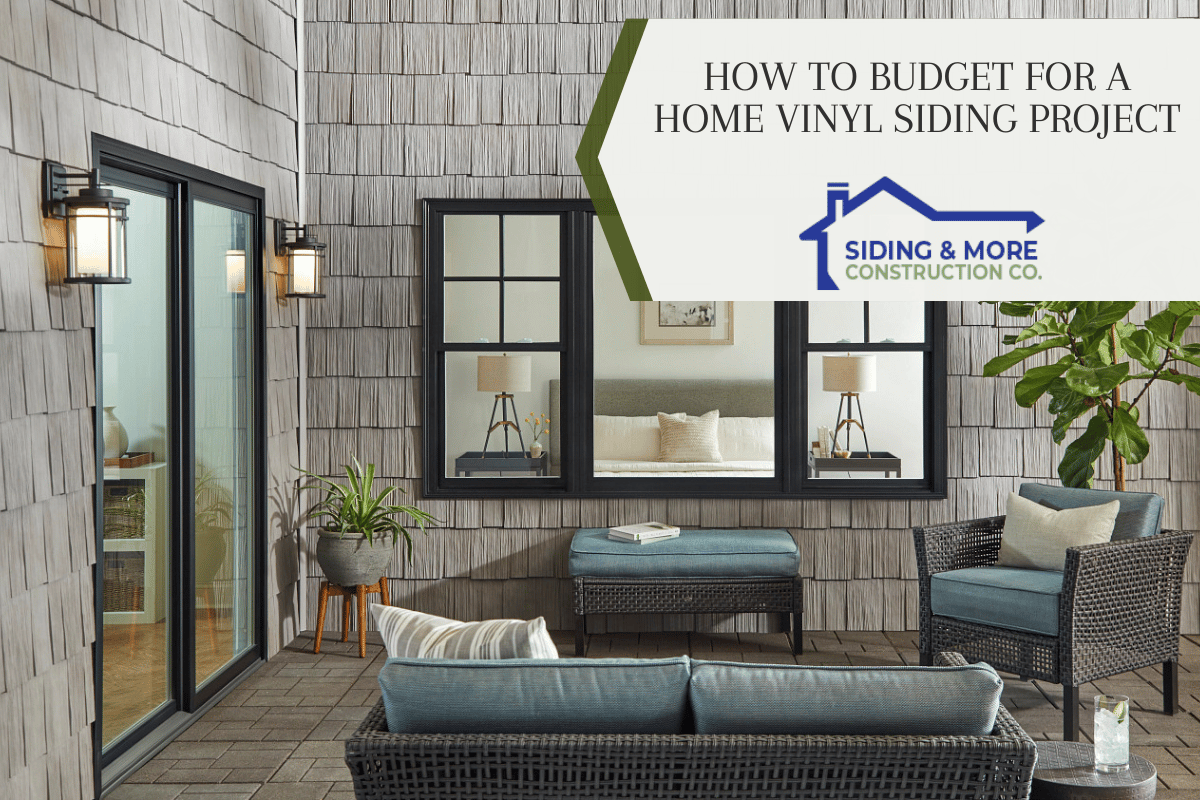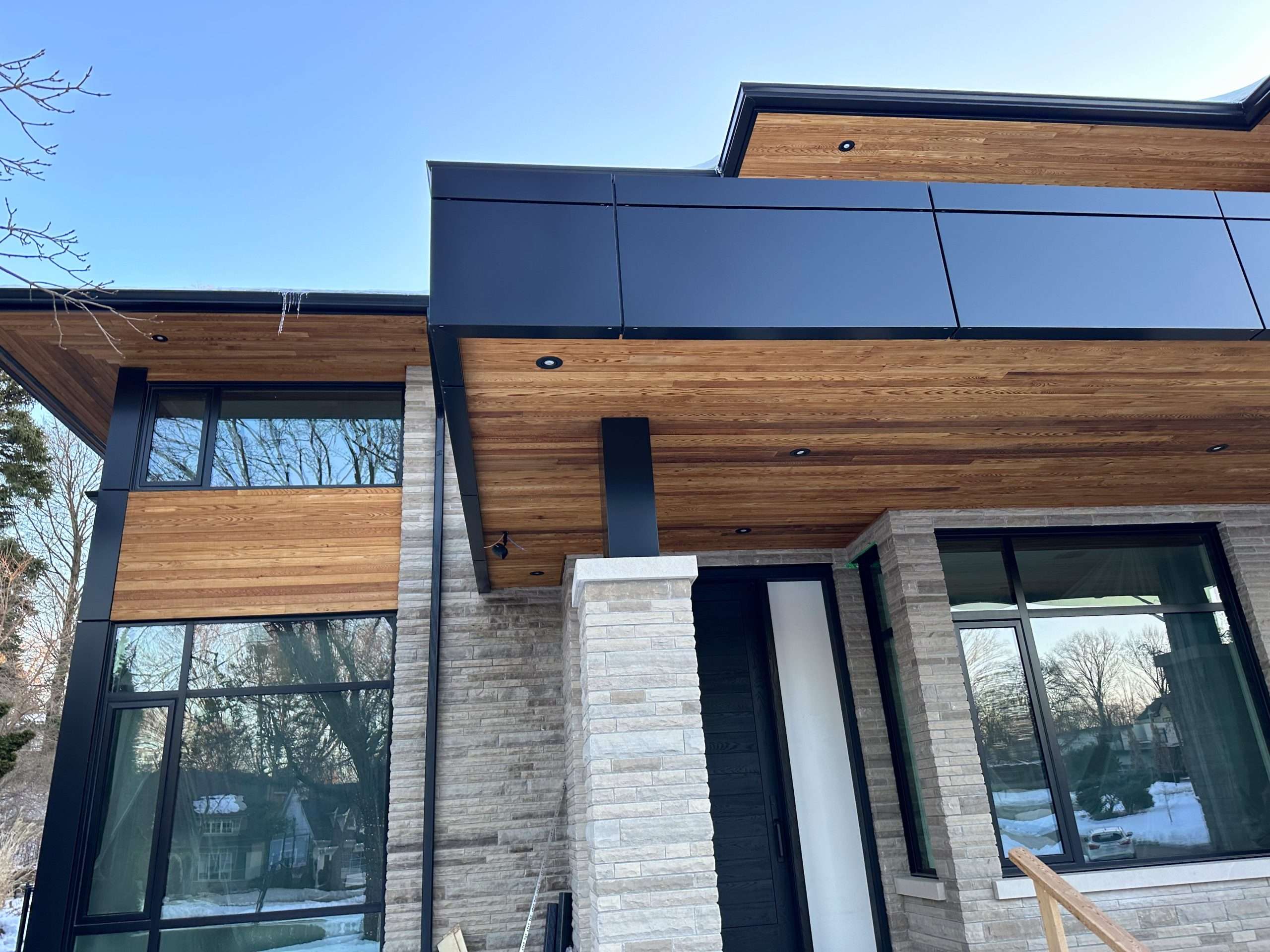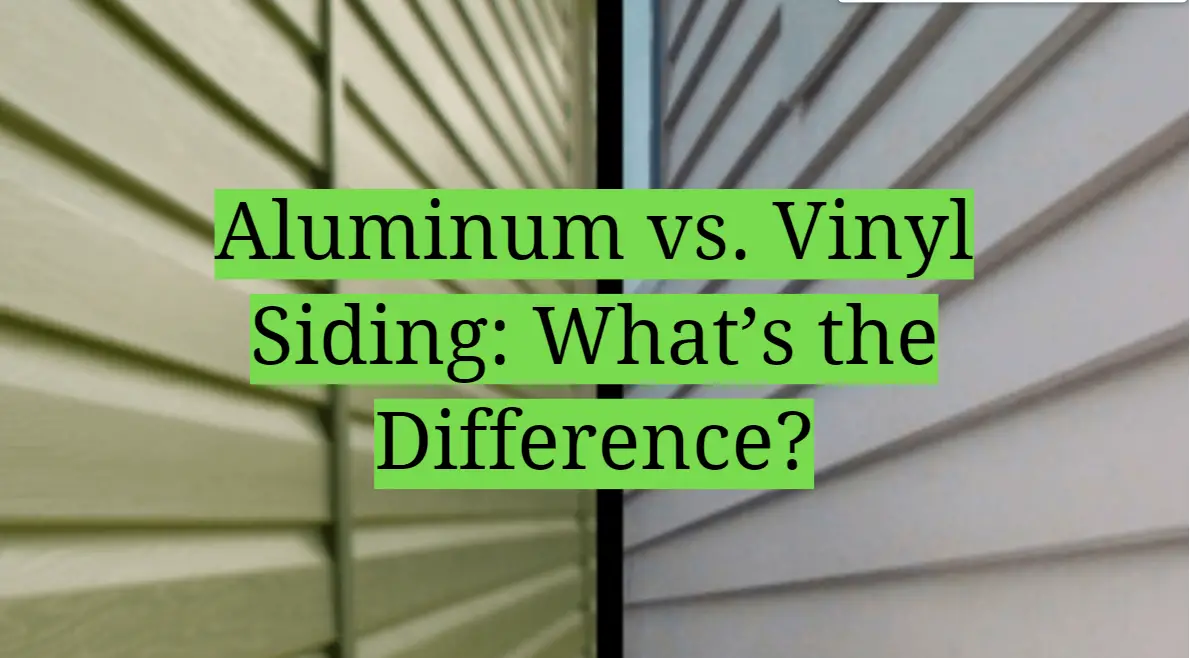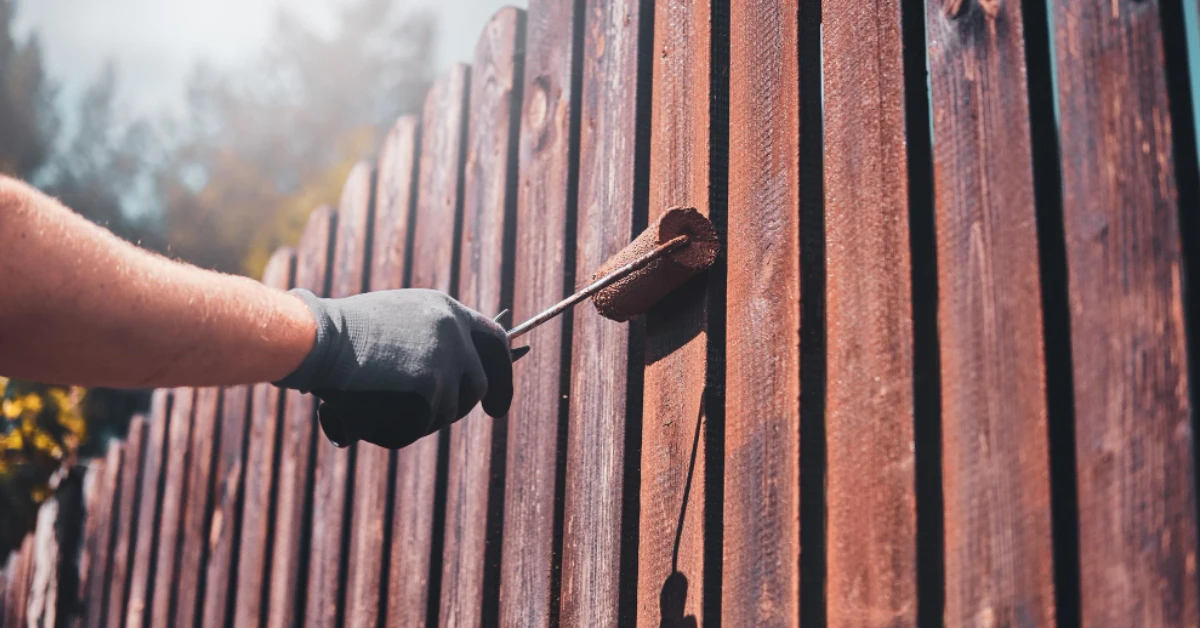How Insulated Siding Improves Home Comfort and Efficiency: Investing in insulated siding offers a multifaceted approach to enhancing your home’s energy performance and overall living experience. This upgrade not only contributes significantly to reduced energy bills but also creates a more comfortable and quieter living environment. We’ll explore the various types of insulated siding, their installation, maintenance, and the long-term benefits they provide, including increased home value and curb appeal.
From understanding the composition of different insulated siding materials to analyzing the return on investment, this comprehensive guide equips homeowners with the knowledge needed to make informed decisions about improving their home’s comfort and efficiency. We will delve into the science behind how insulated siding minimizes heat transfer, reduces drafts, and even dampens noise pollution. We’ll also examine the environmental considerations and the long-term cost-effectiveness compared to traditional siding options. By the end, you’ll have a clear understanding of whether insulated siding is the right choice for your home.
Introduction to Insulated Siding
Insulated siding offers a compelling alternative to traditional siding, enhancing both the aesthetic appeal and energy efficiency of your home. It combines the protective outer layer of traditional siding with an integrated layer of insulation, creating a more comfortable and cost-effective living environment. This integrated design streamlines installation and reduces the need for separate insulation measures, resulting in a more efficient and streamlined construction process.
Insulated siding materials typically consist of an outer layer designed for weather resistance and aesthetic appeal, a core layer providing insulation, and sometimes a backing layer for added protection and structural support. The outer layer is often made of materials like vinyl, fiber cement, or engineered wood, each offering unique benefits in terms of durability, maintenance, and appearance. The core insulation is commonly made of rigid foam insulation, such as expanded polystyrene (EPS) or extruded polystyrene (XPS), known for their excellent thermal resistance. These materials contribute significantly to the overall energy efficiency of the siding system.
Insulated Siding Types
The choice of insulated siding depends on several factors, including budget, aesthetic preferences, and the specific climate. Different types of insulated siding offer varying levels of performance and longevity.
- Vinyl Insulated Siding: This is a popular choice due to its affordability, low maintenance, and wide range of colors and styles. The vinyl outer layer is durable and easy to clean, while the foam core provides effective insulation. Vinyl insulated siding is often a good option for homeowners seeking a balance between cost and performance.
- Fiber Cement Insulated Siding: Offering superior durability and fire resistance compared to vinyl, fiber cement insulated siding is a more premium option. It’s known for its long lifespan and ability to withstand harsh weather conditions. However, it is typically more expensive than vinyl siding and requires more careful installation.
- Engineered Wood Insulated Siding: Engineered wood siding combines the natural beauty of wood with enhanced durability and moisture resistance. The insulation core helps to prevent moisture damage and improve energy efficiency. This type of siding often provides a more sophisticated aesthetic appeal but may require more maintenance than vinyl.
Insulated Siding vs. Traditional Siding
A key difference lies in the integrated insulation. Traditional siding requires separate installation of insulation, often within the wall cavity. This can lead to thermal bridging—heat loss through areas where the insulation is not continuous—and potential gaps in the insulation layer. Insulated siding, on the other hand, eliminates this issue by incorporating insulation directly within the siding panel.
| Feature | Insulated Siding | Traditional Siding |
|---|---|---|
| Insulation | Integrated within siding panel | Installed separately in wall cavity |
| Installation | Often faster and simpler | More complex, requiring separate insulation installation |
| Energy Efficiency | Generally higher due to reduced thermal bridging | Can be less efficient due to potential thermal bridging and installation inconsistencies |
| Maintenance | Varies depending on material; generally low to moderate | Varies depending on material; may require more frequent repainting or repairs |
| Cost | Generally more expensive upfront | Typically less expensive upfront, but may have higher long-term energy costs |
Energy Efficiency Benefits
Insulated siding offers significant advantages in improving a home’s energy efficiency, leading to both increased comfort and lower energy bills. By creating an effective barrier against heat transfer, it helps maintain a consistent indoor temperature year-round, reducing the strain on your heating and cooling systems.
Insulated siding reduces heat transfer in both summer and winter months. During summer, the insulating layer prevents the outside heat from penetrating the walls, keeping the interior cooler and reducing the workload on your air conditioning system. Conversely, in winter, the insulation minimizes heat loss from the interior, helping to keep your home warmer and reducing the demand on your heating system. This two-way protection translates directly into substantial energy savings.
Impact on Energy Bills
The impact of insulated siding on energy bills is demonstrably positive. By reducing the energy needed to heat and cool your home, you can expect a noticeable decrease in your monthly utility costs. The exact amount of savings will vary depending on factors such as climate, home size, existing insulation, and the type of insulated siding installed. However, studies consistently show significant reductions in energy consumption. For example, a study by the Oak Ridge National Laboratory indicated that homes with insulated siding experienced an average reduction of 15-25% in heating and cooling costs compared to homes with traditional siding. This translates to substantial savings over the lifespan of the siding.
Energy Savings Data
Several studies and real-world examples support the energy-saving claims of insulated siding. Independent testing by organizations like the National Fenestration Rating Council (NFRC) provides data on the thermal performance of various siding materials. This data is often expressed in terms of R-value, which measures the material’s resistance to heat flow. A higher R-value indicates better insulation. For instance, a typical insulated vinyl siding might have an R-value of 4 or higher, significantly exceeding the R-value of traditional wood or aluminum siding. This improved R-value directly contributes to lower energy consumption and reduced utility bills. Homeowners who have installed insulated siding often report savings ranging from 10% to 30% on their annual energy bills, depending on factors such as climate and home size. These savings not only offset the initial cost of installation but also provide long-term financial benefits.
Improved Home Comfort
Insulated siding significantly enhances your home’s comfort by creating a more stable and pleasant indoor environment. This improvement stems from its ability to regulate temperature, reduce drafts, and minimize external noise intrusion.
Insulated siding minimizes temperature fluctuations by acting as a barrier against heat transfer. In the summer, it prevents the sun’s heat from penetrating the walls, keeping your home cooler and reducing the strain on your air conditioning system. Conversely, during winter, it effectively insulates your home, retaining heat and reducing the amount of energy needed to maintain a comfortable temperature. This results in a more consistent internal temperature, regardless of external weather conditions. The improved thermal mass provided by the siding helps to moderate temperature swings, preventing sudden temperature drops or spikes.
Reduced Drafts and Air Leaks
Drafts and air leaks are common culprits behind discomfort in homes, leading to uneven temperatures and energy waste. Insulated siding effectively seals gaps and cracks in your exterior walls, preventing cold air from entering in winter and warm air from escaping in summer. This creates a tighter building envelope, minimizing drafts and improving the overall comfort level within your home. The reduction in air infiltration also contributes to better indoor air quality by preventing the entry of pollutants and allergens from the outside.
Noise Reduction
Noise pollution is a significant factor affecting home comfort. Insulated siding plays a crucial role in sound dampening, reducing the amount of external noise that penetrates your home. The added insulation layer acts as a sound barrier, absorbing and deflecting sound waves, creating a quieter and more peaceful indoor environment. This is particularly beneficial for homes located near busy roads, airports, or other noisy areas.
| Noise Level (dB) | Without Insulated Siding | With Insulated Siding |
|---|---|---|
| Traffic Noise | 75-85 | 60-70 |
| Construction Noise | 90-100 | 75-85 |
| Neighbor Noise | 55-65 | 40-50 |
Installation Process and Considerations
Insulated siding installation is a multifaceted process requiring careful planning and execution. While it can be a DIY project for experienced homeowners, professional installation is often recommended, especially for larger homes or complex designs. Understanding the process, potential challenges, and necessary precautions is crucial for a successful outcome.
The typical installation of insulated siding involves several key steps, beginning with the preparation of the existing exterior walls. This includes removing old siding, repairing any damaged areas, and ensuring the underlying structure is sound. Next, the installation of furring strips or other fastening systems provides a level surface for the new siding and helps to create a proper air gap for insulation. The insulated siding panels are then installed, overlapping appropriately and secured using appropriate fasteners. Finally, trim pieces and accessories are installed to complete the project, ensuring a clean and professional finish. This process varies slightly depending on the specific type of insulated siding used, but the core steps remain consistent.
Potential Installation Challenges and Solutions
Several challenges can arise during insulated siding installation. These can range from unforeseen structural issues to difficulties with fitting panels around complex architectural features. Careful planning and preparation can mitigate many of these problems. For instance, improperly prepared surfaces can lead to uneven siding and compromised insulation. Solutions include addressing structural issues before starting installation and using appropriate shims and fasteners to ensure a level surface. Working with difficult angles or curves requires precise measurements and cuts, which may necessitate specialized tools and techniques. In such cases, utilizing pre-fabricated components or seeking professional assistance may prove advantageous.
DIY Installation Step-by-Step Guide
For homeowners considering a DIY approach, careful planning and preparation are paramount. A step-by-step guide, coupled with a realistic assessment of one’s skills, is essential. Attempting installation without sufficient knowledge or experience can lead to costly mistakes and potentially compromise the integrity of the home’s exterior.
- Thorough Assessment and Planning: Carefully measure the area requiring siding and purchase sufficient materials. This includes siding panels, fasteners, trim, and any necessary underlayment. Account for waste and potential errors. Consider creating detailed diagrams to visualize the installation process.
- Surface Preparation: Remove existing siding, ensuring a clean and level surface. Repair any damaged areas of the underlying wall structure. This might involve patching holes, replacing rotten wood, or addressing any other structural issues. A properly prepared surface is critical for a successful installation.
- Installation of Furring Strips (if necessary): Install furring strips to create a level surface and air gap behind the siding. Ensure they are properly spaced and securely fastened to the wall. This step improves insulation and ventilation.
- Siding Panel Installation: Begin installing the siding panels from the bottom, working upwards. Follow the manufacturer’s instructions carefully regarding overlap and fastening. Ensure proper alignment and spacing between panels. Utilize appropriate tools to ensure accurate cuts and clean lines.
- Trim and Accessory Installation: Install trim pieces around windows, doors, and corners, ensuring a neat and professional finish. This adds to the overall aesthetic appeal and protects the edges of the siding.
- Final Inspection: Once the installation is complete, conduct a thorough inspection to ensure all panels are securely fastened and there are no gaps or visible imperfections. Address any issues before the project is considered finished.
Maintenance and Longevity
Insulated siding, while offering significant long-term benefits, requires some maintenance to ensure its continued performance and aesthetic appeal. Understanding these requirements and the lifespan of different materials will help homeowners make informed decisions and maximize their investment. Proper care can significantly extend the life of your siding and prevent costly repairs down the line.
Proper maintenance significantly impacts the longevity and performance of insulated siding. Regular cleaning and prompt attention to any damage are key to preserving its energy efficiency and aesthetic value. Neglecting maintenance can lead to premature deterioration and compromise the investment.
Insulated Siding Maintenance Requirements
Regular cleaning is crucial to maintain the appearance and performance of insulated siding. This typically involves washing the siding with a mild detergent and water solution using a soft brush or sponge. Power washing should be avoided as it can damage the siding’s surface. Annual inspections are recommended to check for any signs of damage, such as cracks, dents, or loose panels. Promptly addressing any damage will prevent further deterioration and potential water intrusion. For example, a small crack left unrepaired can allow moisture to penetrate, leading to rot or mold growth. Additionally, it’s advisable to trim back any overhanging branches that might scratch or damage the siding during storms.
Lifespan and Durability of Insulated Siding Types
The lifespan of insulated siding varies depending on the material used, the quality of installation, and the level of maintenance provided. Vinyl insulated siding, for example, is known for its durability and can last for 30-50 years with proper care. Fiber cement insulated siding, while more expensive initially, offers an even longer lifespan, often exceeding 50 years. Aluminum insulated siding is also quite durable and can last for several decades, but it’s more susceptible to dents and scratches. Wood insulated siding, while aesthetically pleasing, requires more frequent maintenance and has a shorter lifespan than vinyl or fiber cement, typically ranging from 20-30 years depending on the type of wood and the climate. The choice of material should consider the local climate, budget, and desired aesthetic.
Long-Term Cost-Effectiveness of Insulated Siding
While the initial cost of insulated siding might be higher than that of non-insulated options, the long-term cost-effectiveness is undeniable. The energy savings resulting from improved insulation can significantly offset the higher upfront investment over the siding’s lifespan. For example, a homeowner might spend an extra $5,000 on insulated siding compared to non-insulated alternatives. However, the reduced energy bills over 30 years could easily exceed this amount, leading to substantial savings. Furthermore, the increased lifespan of insulated siding reduces the need for frequent replacements, further contributing to its long-term cost-effectiveness compared to options requiring more frequent maintenance or replacement. This makes insulated siding a sound financial investment for homeowners seeking both energy efficiency and long-term value.
Environmental Impact
Insulated siding offers significant environmental advantages compared to traditional siding options, contributing to a more sustainable building practice and reduced carbon footprint. The benefits extend from the manufacturing process to the long-term energy savings it provides for homeowners.
The sustainability of insulated siding hinges on the materials used in its production. Many manufacturers utilize recycled content in their products, reducing reliance on virgin materials and minimizing landfill waste. Furthermore, the use of materials with high recycled content contributes to a smaller carbon footprint throughout the product lifecycle. For example, some insulated siding manufacturers incorporate recycled plastic or wood fibers into their formulations, diverting waste from landfills and reducing the demand for new raw materials. The selection of sustainably sourced wood for certain types of insulated siding further enhances its environmental profile.
Material Sustainability in Insulated Siding Production
The environmental impact of insulated siding production is significantly influenced by the materials employed. Common materials include vinyl, fiber cement, and engineered wood. Vinyl siding, while often criticized for its reliance on fossil fuels, can incorporate recycled PVC content, reducing its overall environmental impact. Fiber cement siding, a composite material, typically contains a mix of cement, cellulose fibers, and other additives, offering a more sustainable alternative to some traditional siding options. Engineered wood siding often utilizes recycled wood fibers, further minimizing environmental impact. The selection of materials with high recycled content and sustainable sourcing practices directly impacts the overall sustainability of the product.
Comparison of Carbon Footprint: Insulated vs. Traditional Siding
A life-cycle assessment comparing insulated siding to traditional options reveals significant differences in carbon footprint. Traditional siding materials, such as wood, often require extensive harvesting and processing, resulting in higher greenhouse gas emissions. Furthermore, the lack of insulation in traditional siding necessitates increased energy consumption for heating and cooling, adding to the overall carbon footprint of the building over its lifetime. Insulated siding, by contrast, reduces energy consumption through improved insulation, thereby offsetting some of the emissions associated with its manufacturing. While the initial manufacturing process of insulated siding may have a slightly higher carbon footprint compared to some traditional options, the long-term energy savings from reduced heating and cooling needs significantly decrease the overall environmental impact over the siding’s lifespan. Studies comparing life-cycle assessments of various siding types often demonstrate that insulated siding presents a lower overall carbon footprint when considering the entire building lifecycle.
Cost Analysis and Return on Investment
Investing in insulated siding represents a significant home improvement, and understanding the associated costs and potential return on investment (ROI) is crucial for making an informed decision. This section will analyze the initial investment and demonstrate how to calculate the potential long-term financial benefits of this upgrade.
The initial cost of purchasing and installing insulated siding varies considerably depending on several factors. These factors include the size of your home, the type of siding chosen (vinyl, fiber cement, etc.), the complexity of the installation (e.g., requiring significant repairs or removal of existing siding), regional labor costs, and the chosen contractor’s pricing. A rough estimate for a mid-sized home might range from $10,000 to $30,000 or more, but it’s essential to obtain multiple quotes from reputable contractors for an accurate assessment specific to your project.
Calculating Return on Investment for Insulated Siding
Calculating the ROI for insulated siding involves comparing the initial investment cost to the long-term savings generated through reduced energy consumption. This calculation requires estimating both the upfront costs and the anticipated annual energy savings. Several factors influence the accuracy of this calculation, including your current energy consumption, local energy prices, the R-value of the chosen insulated siding, and climate conditions.
Sample ROI Calculation
Let’s consider a hypothetical example: A homeowner invests $15,000 in installing insulated siding on a 1,500 square foot home. Assume their current annual heating and cooling costs are $2,000. After installation, they experience a 20% reduction in energy bills, resulting in annual savings of $400 ($2,000 x 0.20).
To calculate the simple payback period, divide the initial investment by the annual savings: $15,000 / $400 = 37.5 years. This indicates that it would take approximately 37.5 years to recoup the initial investment through energy savings alone.
However, a more comprehensive ROI calculation would also consider factors such as increased home value and potential tax credits. For instance, if the insulated siding increases the home’s value by $5,000, this should be added to the total return. Additionally, some regions offer tax incentives for energy-efficient home improvements. These factors can significantly improve the overall ROI, potentially shortening the payback period considerably. Therefore, it is crucial to factor in all relevant financial aspects for a realistic assessment.
A thorough ROI calculation requires considering not only energy savings but also potential increases in home value and any applicable tax credits or rebates.
Home Value and Curb Appeal
Investing in insulated siding offers a significant return, not just in energy savings, but also in increased home value and enhanced curb appeal. A visually appealing and energy-efficient home is highly desirable in the real estate market, leading to a faster sale and a potentially higher selling price. Furthermore, improved curb appeal can positively impact a homeowner’s enjoyment of their property.
Insulated siding dramatically improves a home’s aesthetic appeal by providing a clean, modern, and well-maintained look. The variety of colors and styles available allows homeowners to personalize their homes to reflect their individual tastes and complement their landscaping. This improved appearance not only enhances the property’s visual attractiveness but also contributes significantly to its market value. Appraisers often consider curb appeal a key factor when assessing a home’s worth.
Siding Styles and Colors that Enhance Curb Appeal
The selection of siding style and color significantly impacts a home’s overall curb appeal. Choosing the right combination can transform a house from ordinary to extraordinary. Consider the architectural style of your home when making your selection.
- Classic Vinyl Siding: Available in a wide range of colors, including traditional earth tones like beige, brown, and gray, as well as bolder options like navy blue or deep red. This style offers a timeless appeal and requires minimal maintenance. Imagine a two-story colonial home with crisp white trim and deep charcoal vinyl siding – a classic and elegant combination.
- Modern Fiber Cement Siding: Fiber cement offers a sophisticated, low-maintenance alternative to wood siding. Its sleek lines and ability to mimic the look of wood, stone, or stucco makes it ideal for contemporary or craftsman-style homes. Consider a sleek, gray fiber cement siding on a modern ranch-style home, accented with black windows and a dark gray front door.
- Traditional Wood Siding: While requiring more maintenance, wood siding offers unparalleled natural beauty and character. Natural wood tones like cedar or redwood can create a warm and inviting aesthetic, especially for homes with a rustic or farmhouse design. Picture a charming cabin-style home with stained cedar siding, complementing its stone foundation and surrounding trees.
Choosing the Right Insulated Siding
Selecting the ideal insulated siding involves careful consideration of several key factors to ensure optimal performance, longevity, and aesthetic appeal for your home. The right choice depends on your climate, budget, and personal preferences. Understanding these factors will guide you towards a decision that maximizes both energy efficiency and curb appeal.
Factors Influencing Insulated Siding Selection
Several critical factors should be evaluated when choosing insulated siding. These include climate conditions, budget constraints, home style, and desired maintenance levels. The interplay of these factors will ultimately determine the most suitable material for your specific needs.
- Climate: Homes in colder climates will benefit from siding with higher R-values (a measure of thermal resistance), offering superior insulation against freezing temperatures. Conversely, warmer climates might prioritize siding with better ventilation properties to prevent moisture buildup. For example, fiber cement siding might be preferred in a humid coastal climate due to its resistance to moisture damage, while vinyl siding, with its lower cost, might be suitable in a dry, desert climate.
- Budget: Insulated siding options vary significantly in price. Vinyl siding is generally the most affordable, while fiber cement and engineered wood siding represent higher initial investments. It’s crucial to balance cost with long-term energy savings and durability.
- Home Style: The architectural style of your home should influence your siding choice. Certain materials complement specific styles better than others. For example, traditional homes might pair well with clapboard siding, while modern homes might look better with sleek, smooth-surface options.
- Maintenance Requirements: Different siding materials require varying levels of maintenance. Vinyl siding is generally low-maintenance, while wood siding requires regular painting or staining to protect against rot and insect damage. Fiber cement requires less maintenance than wood but more than vinyl.
Material Comparison and Climate Suitability
Various materials offer unique properties impacting their suitability for different climates. Understanding these differences is key to making an informed decision.
| Material | Climate Suitability | Pros | Cons |
|---|---|---|---|
| Vinyl | Mild to moderate climates; less suitable for extreme temperatures or high humidity. | Affordable, low maintenance, variety of colors and styles. | Can be easily damaged, less durable than other options, may fade in intense sunlight. |
| Fiber Cement | Most climates; durable and resistant to fire, insects, and moisture. | Durable, low maintenance, fire-resistant, resists insects and rot. | Higher initial cost, heavier than vinyl, requires professional installation. |
| Engineered Wood | Moderate climates; less suitable for extremely wet or dry conditions. | Aesthetically pleasing, relatively durable, can be painted or stained. | More susceptible to moisture damage than fiber cement, requires regular maintenance. |
Insulated Siding Selection Decision-Making Flowchart
A structured approach simplifies the decision-making process. The following flowchart provides a step-by-step guide.
Begin by assessing your budget and climate. If budget is limited and climate is mild, consider vinyl siding. If budget allows and climate is extreme, consider fiber cement. If aesthetic appeal is prioritized and climate is moderate, consider engineered wood. Finally, factor in maintenance requirements and home style before making a final decision.
Case Studies and Real-World Examples
Illustrating the tangible benefits of insulated siding requires looking beyond theoretical data. This section presents real-world examples showcasing the impact of insulated siding on homes, highlighting homeowner experiences and the visual transformations achieved. We’ll explore specific cases to demonstrate the practical advantages and long-term value this upgrade provides.
Successful Insulated Siding Installations
The following examples demonstrate the successful application of insulated siding across various home styles and climates. These cases highlight the versatility and effectiveness of this home improvement solution.
Example 1: A Colonial-Style Home in New England. A 1920s Colonial home in Massachusetts, originally clad in aging clapboard, underwent a complete exterior renovation. The installation of insulated vinyl siding not only dramatically improved the home’s curb appeal—transforming its faded, weathered exterior into a crisp, clean white—but also significantly reduced energy consumption. Before the renovation, the homeowners reported high heating bills during winter. After installation, they experienced a 30% reduction in their annual heating costs. The new siding’s robust construction also provided better protection against harsh New England weather, reducing maintenance needs. The visual transformation involved replacing the aged, uneven clapboard with smooth, uniformly colored vinyl siding, enhancing the home’s architectural details. The before image showed a home with noticeable discoloration and damage, while the after image showcased a revitalized home with a clean, updated appearance.
Example 2: A Ranch-Style Home in the Southwest. A ranch-style home in Arizona, initially faced with stucco showing signs of cracking and fading, benefited from the installation of insulated fiber cement siding. The light-colored siding reflected sunlight, significantly reducing the interior temperature and lowering cooling costs. The homeowners reported a 20% decrease in their annual cooling bills. Furthermore, the fiber cement siding proved highly resistant to the intense desert sun and high temperatures, maintaining its appearance and structural integrity for years without requiring significant maintenance. The before image displayed the cracked and faded stucco, highlighting its deteriorated condition. The after image showcased the smooth, uniformly colored fiber cement siding, which improved the home’s aesthetic appeal and provided a more modern look.
Homeowner Testimonials
Direct feedback from homeowners who have experienced the benefits of insulated siding provides compelling evidence of its effectiveness.
“We were hesitant about the investment at first, but the energy savings from our new insulated siding have already paid for a significant portion of the installation cost. Beyond that, our home is so much more comfortable year-round,” said Mrs. Johnson, a homeowner from Maine who opted for insulated vinyl siding.
“The upgrade was a game-changer for our home in Phoenix. The insulated siding kept the interior significantly cooler during the scorching summers, drastically reducing our energy bills and improving our comfort level,” stated Mr. Rodriguez, a homeowner in Arizona who chose insulated fiber cement siding.
Before-and-After Visual Transformations
The visual impact of insulated siding is often as striking as its functional benefits.
Many homes, particularly older ones, exhibit signs of wear and tear, such as peeling paint, damaged siding, and uneven surfaces. The installation of insulated siding not only addresses these issues but also offers a chance to refresh the home’s exterior color and style. Before-and-after photos commonly reveal a dramatic transformation, showcasing the updated appearance of the home. For instance, a weathered wood-sided home might be transformed into a modern, sleek structure with a new color scheme, while a home with outdated vinyl siding can be updated with a more contemporary style and color. The improvement is often so dramatic that it can add significantly to the overall aesthetic appeal and curb appeal of the property. In many cases, the renewed appearance not only improves the home’s value but also enhances the neighborhood’s aesthetic.
Summary
Ultimately, the decision to install insulated siding represents a significant investment in your home’s future. By weighing the initial costs against the long-term energy savings, increased comfort, enhanced curb appeal, and improved home value, homeowners can confidently assess the return on investment. The enhanced energy efficiency, reduced noise levels, and improved comfort contribute to a more enjoyable and valuable living space, making insulated siding a worthwhile consideration for any homeowner seeking to upgrade their property.
